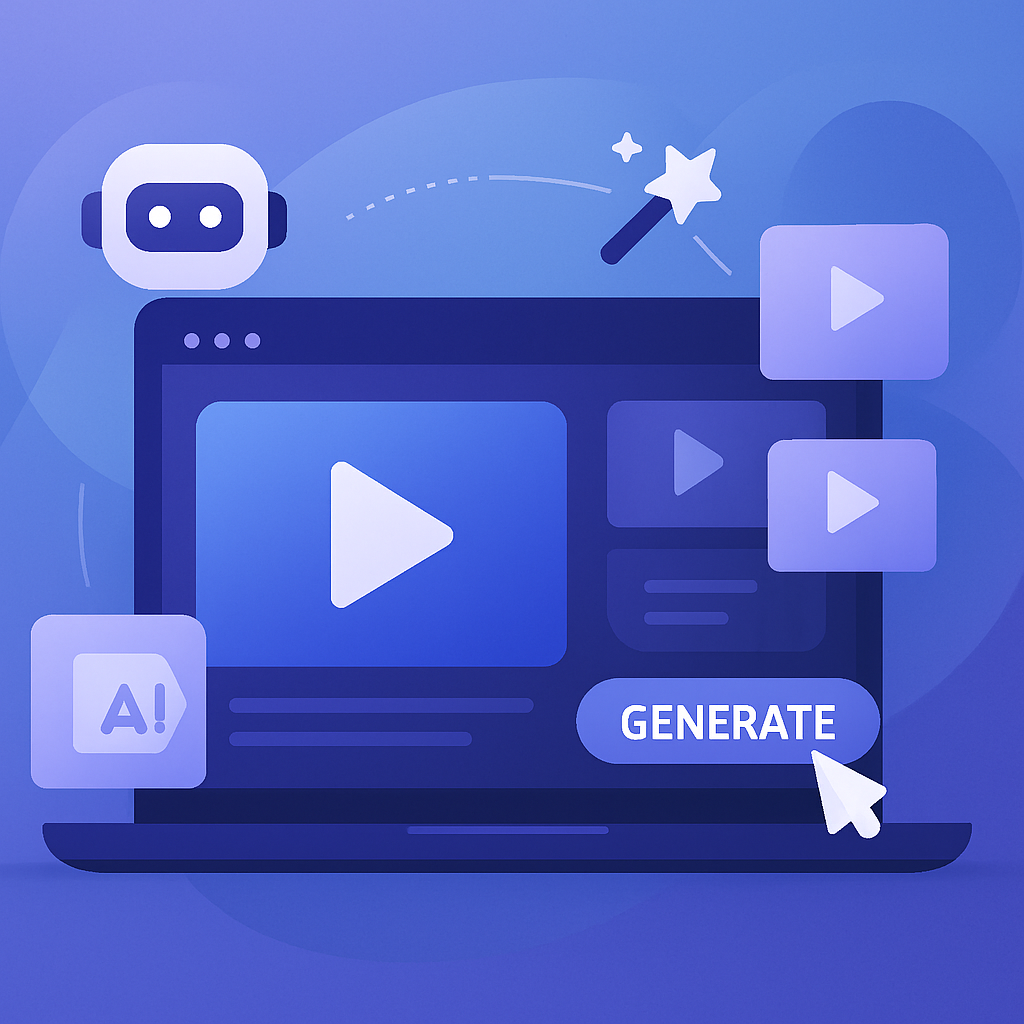
Learning in the Flow of Work: What’s Broken, Why It Matters, and How We Can Fix It
Create AI videos with 230+ avatars in 140+ languages.
There’s a dirty little secret about workplace learning: most of it doesn’t work.
Not because people don’t care, not because the content is bad, and definitely not because we’re short on tools. It doesn’t work because learning is still treated like a separate event—something that happens outside of work, away from the job, removed from the moment where someone actually needs help.
That’s the heart of the problem. And it’s time we fix it.
What Is “Learning in the Flow of Work,” Anyway?
Josh Bersin coined the term years ago, and it's simple in theory: learning in the flow of work means employees get the guidance, knowledge, or support they need at the moment they need it, without stopping what they’re doing.
It’s a shift from one-off courses and content dumps to contextual enablement: quick, useful, accessible nudges or resources that meet people in the tools, tasks, or workflows they’re already using.
Imagine asking “How do I fill out this report?” and instantly getting a 60-second video in your workflow tool that walks you through it—without booking a training, without digging through a 42-slide deck, and without leaving your dashboard.
That’s learning in the flow of work. It’s not about cramming more content into people’s calendars. It’s about freeing up their cognitive bandwidth so they can focus on doing their job well.
What’s Broken Today?
Let’s not sugarcoat it. Here's what’s broken:
1. Learning is divorced from work
Most training is still one-size-fits-all, long-form, and generic. It’s built to satisfy compliance checkboxes or classroom habits—not to help someone solve a real problem in their day-to-day workflow.
“If I’m trying to figure something out in Salesforce, I don’t want a 45-minute course. I want a 45-second answer.”
2. Content overload ≠ enablement
We’ve become experts at delivering content, but not necessarily at helping people apply it. The flood of LMS modules, PDFs, and slide decks doesn’t translate into behavior change—because it’s not built around how people actually learn and work.
According to Deloitte’s modern learner report, workers are overwhelmed, distracted, and impatient. They want support that’s fast, frictionless, and directly applicable.
3. No feedback loops
Employees often can't say, “This wasn’t helpful,” or “I still don’t get it,” because learning materials live in static systems. And L&D teams rarely have visibility into how resources perform in the real world.
We’re stuck in a publish-and-pray model. That’s not enablement. That’s a gamble.
Why Fixing It Matters (Now More Than Ever)
There’s a bigger picture here.
Organizations are facing massive change—AI disruption, new workflows, frontline turnover, and globally distributed teams. In that kind of environment, your ability to learn fast and adapt faster is a competitive advantage.
“Learning in the flow” isn’t a nice-to-have. It’s infrastructure.
In Bersin’s Learning & Talent Revolution report, he outlines how traditional L&D approaches are breaking under the pressure of modern business. Skills are perishable. Context is everything.
If people can't access the knowledge they need when the stakes are high, launching a new product, handling a customer escalation, navigating a new process, they flail or worse, they stop trying.
Fixing this isn't about making things more convenient. It's about speed, clarity, and confidence—at scale.
So How Do We Fix It?
Let’s get practical. Here’s where the real change begins:
1. Start with moments, not modules
Don’t ask “What course should we build?” Ask “Where do people get stuck?” Identify friction points in real workflows—tools, handoffs, processes—and serve targeted guidance right there.
Think of it like UX design for learning. Solve for real user moments.
2. Design for nudges, not Netflix
People don’t need a catalog of courses. They need micro-moments of clarity. A 90-second video. A screen-recorded walkthrough. A smart tooltip in an app. These tiny interventions compound into capability.
“I don’t need everything. I need just enough to move forward.”
And this isn’t just theory. McKinsey redesigned how they onboard and upskill consultants by embedding learning directly into day-to-day work, what they call just-in-time learning. Instead of front-loading content through formal courses, employees receive curated, bite-sized resources triggered by the actual client work they’re doing. It’s learning that anticipates need, not content that waits to be discovered.
3. Plug learning into existing tools
Use the systems your people already live in—Slack, Teams, Notion, Salesforce, ServiceNow. Don’t force them to log into another platform. Embed enablement into the ecosystem.
“If it’s not visible in my workflow, it doesn’t exist.”
4. Close the loop
Measure reach, usage, and impact. Ask: “Was this helpful?” Track time-to-competency. Create a feedback loop between creators and users so your resources get sharper over time.
Modern L&D is a product function. You build, test, learn, iterate.
Final Thought: We Don’t Need More Content—We Need More Context
Learning in the flow of work isn’t about dumping knowledge on employees faster. It’s about making learning invisible—so it supports people without getting in their way.
It’s time to stop building knowledge libraries and start building learning experiences that actually work.
Start small. Go deep. Focus on friction. That’s where transformation lives.
Check out the full discussion from our episode of Futureproof with Cian Dowling, Solution Architect at Synthesia:
Get Hands-On Support with Synthesia’s Advisory Services
Synthesia’s Advisory Services offer hands-on guidance to help managers and teams implement AI video personalization effectively.
By working with our experts, businesses can:
- Identify scalable opportunities for automated video messaging.
- Develop a tailored roadmap for integrating AI video into workflows
- Access training and pre-built templates to accelerate adoption
Beyond the technical aspects, our Advisory Services focus on aligning automation with business objectives and team goals. Whether it's enhancing customer outreach, improving internal communication, or streamlining recruitment, our experts collaborate closely with teams to ensure AI-powered video delivers real business value.
About the author
Strategic Advisor
Kevin Alster
Kevin Alster is a Strategic Advisor at Synthesia, where he helps global enterprises apply generative AI to improve learning, communication, and organizational performance. His work focuses on translating emerging technology into practical business solutions that scale.He brings over a decade of experience in education, learning design, and media innovation, having developed enterprise programs for organizations such as General Assembly, The School of The New York Times, and Sotheby’s Institute of Art. Kevin combines creative thinking with structured problem-solving to help companies build the capabilities they need to adapt and grow.

Frequently asked questions
What does “learning in the flow of work” mean?
Learning in the flow of work means giving employees the knowledge, guidance, or resources they need at the exact moment they need it—without interrupting their tasks or pulling them away from their workflow. It’s about integrating learning into the tools and processes they already use.
Why doesn’t most workplace learning work today?
Most training is still delivered as one-off events, long-form courses, or generic content that’s disconnected from real work. Employees need quick, contextual answers, not a 45-minute course when they have a 45-second question.
How is learning in the flow of work different from traditional training?
Traditional training often front-loads content in classrooms or LMS modules, while learning in the flow of work delivers short, targeted guidance at the point of need. Instead of asking employees to remember everything later, it supports them in the moment.
What are some examples of learning in the flow of work?
Examples include a 90-second video embedded in a workflow tool, a step-by-step tooltip in an app, or a short screen recording that pops up when someone gets stuck. These are designed to be fast, frictionless, and directly applicable to the task at hand.
How can companies start implementing learning in the flow of work?
Start by identifying the moments when employees get stuck or need clarity. Create short, targeted resources that address those pain points, and embed them directly into the tools your teams already use, like Slack, Teams, Salesforce, or ServiceNow.














